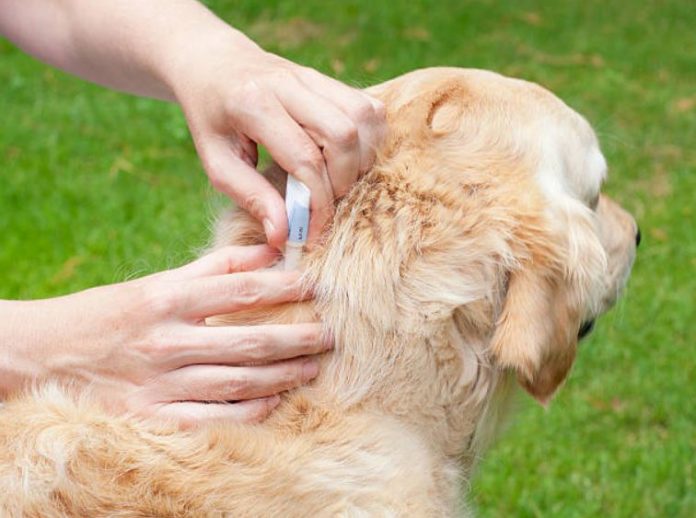Internal parasites (Endoparasite)can strike any dog, whether the dog appears to be clean and/or if it is from a seemingly ‘well-to-do home’.
Roundworms (Toxocara Canis, Toxascaris leonina)are rather like pale earthworms and can reach approximately 10cm in length. They are pointed at both ends.
Signs of presence in a dog are mild vomiting, pot-bellied, dull coat, either sudden weight gain or weight loss.
A puppy might cough or hiccup. A presence of worms will be seen wrapped around the stools passed.
Toxocara Canis
The Life Cycle of the Toxocara Canis starts with the bitch eating contaminated faeces. The larvae migrate to various parts of the body- mammary glands, uterus, and remain in the intestine.
Puppies feed off the bitch and the larvae enter their system, growing into an adult within two weeks. The adult worms lay eggs that hatch into larvae and burrow through the gut wall to the liver and lungs, causing respiratory problems.
Some lay dormant while others are coughed up and swallowed thus traveling down into the intestine where they grow into adult worms and lay thousands of eggs.
These eggs are passed out of the dog where they lay waiting for a passer-by to eat the feces enabling the cycle to start over.
Toxascaris leonina
The Life Cycle of the Toxascaris leonina starts with the eggs being ingested and hatching in the stomach.
They do not migrate, but develop in the wall of the intestine, therefore infection to a bitch’s puppies does not occur.
It is therefore advisable that pregnant bitches should be wormed under the vet’s supervision, puppies should be routinely wormed after the age of two weeks.
Adult dogs should be wormed every six months, every three months is wise if there are young children in the household.
Dipylidium caninum
Tapeworms (Dipylidium caninum) are flat, segmented, and can be up to 50cm long. They are not normally seen as a complete worm, but the individual segments loaded with ripe eggs.
Signs of presence in a dog is that the abdomen may become distorted, but the most common sign is the presence of rice-like grains around the anus.
These worms can also be seen moving in the dog’s faeces. They can cause diarrhea and poor growth development in puppies.
Dipylidium caninum
The Life Cycle of Dipylidium caninum starts when a dog swallows a flea, which has itself swallowed an embryonated worm. The larvae develop into adult worms in the small intestine.
Specific worming remedies for this type of worm are obtained from a vet. Also, ensure that the dog is regularly checked for fleas.
Ticks (Ixodes species) are brownish-white and can be initially mistaken for a wart, but on closer inspection, the legs can be seen, while the head is buried in the epidermis.
Having gorged on the dog’s blood it grows to the size of a bean or pea. Signs of presence may only be when a dog has an allergic reaction to them and due to scratching, red sore areas appear.
Normally a dog will tolerate one or two ticks without showing any signs of irritation and they will only be noticed during grooming.
The Life Cycle of Ixodes species starts with adult ticks laying eggs that drop on the ground. Larvae hatch and climb on to blades of grass, shrubs, etc., where they wait for a passerby to brush past, thus enabling them to attach themselves on to the hair of the dog.
Surgical spirit soaked onto the tick suffocates it, thus loosening its grip. It can then be removed with tweezers.
Never attempt to pull the tick off without soaking it first, as the head will remain and cause infection. Treat the area with insecticide. A special dip/shampoo can be obtained from the vet if the infestation is severe.

